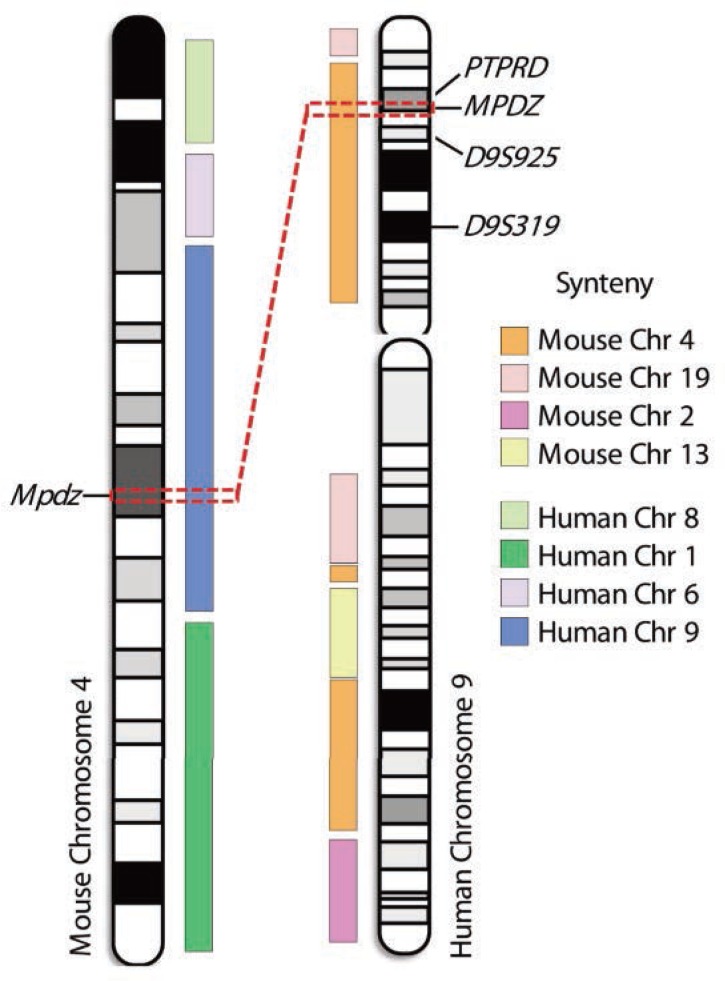Figure 2.
Potential synteny between mouse chromosome 4 and human chromosome 9 quantitative trait loci (QTLs). Human chromosome 9 shares primary conserved regions with mouse chromosomes 1, 4, 19, 2, and 13, and mouse chromosome 4 shares regions syntenic with human chromosomes 9, 8, 1, and 6. For both mouse and human chromosomes additional smaller syntenic regions exist (not shown). Mouse chromosome 4 carries a significant QTL for ethanol withdrawal that has been mapped to 1.8-Mb interval. Within this interval, a gene called Mpdz has been identified as a quantitative trait gene (QTG) candidate for ethanol withdrawal (Shirley et al. 2004). The dashed red boxes and line denote this 1.8-Mb QTL interval and syntenic region on human chromosome 9 (9p23–p22.3). A recent human association study for alcohol consumption (Tabakoff et al. 2010) found significant association with a DNA variation (i.e., single nucleotide polymorphism [SNP]) within the human gene MPDZ (P < 0.0001). Sequence variations in human MPDZ also may be associated with alcohol dependence (Karpyak et al. 2010). Thus, this gene has been implicated in studies using animal model and clinical populations. Additional markers near this region of human chromosome 9 may be associated with alcohol-related phenotypes, including age of onset of use (D9S925; Williams et al. 2005), predisposition to alcohol dependence (D9S319; Long et al. 1998), and alcohol response (PTPRD; Joslyn et al. 2010).

